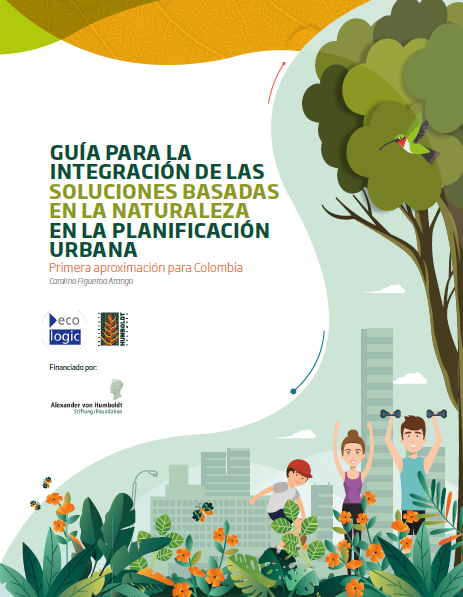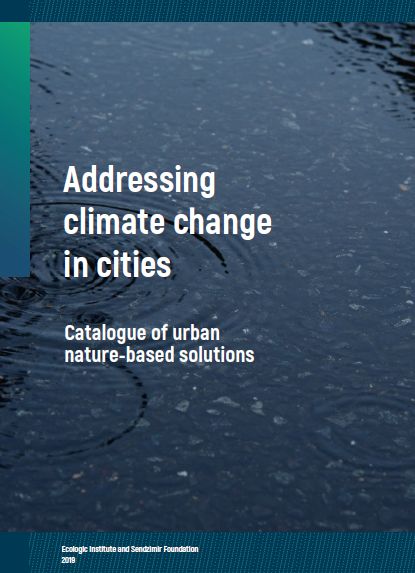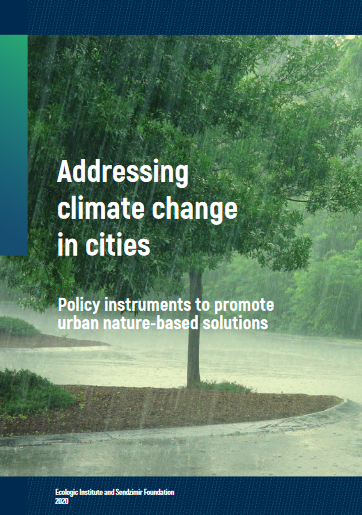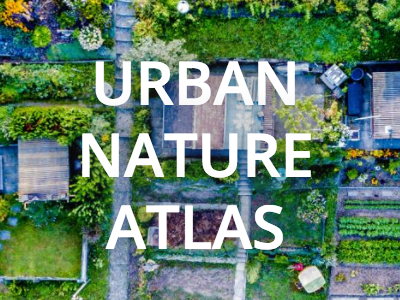Guía para la integración de las Soluciones Basadas en la Naturaleza en la planifcación urbana
primera aproximación para colombia
- Publication
- Citation
Figueroa-Arango C. 2020. Guía para la integración de las Soluciones Basadas en la Naturaleza en la planificación urbana. Primera aproximación para Colombia. Berlín: Alexander von Humboldt Stiftung, Ecologic Institute, Instituto de Investigación de Recursos Biológicos Alexander von Humboldt.
The majority of the Colombian population lives in rapidly densifying cities, leading to the transformation and frequent exclusion of natural environments from these areas. At the same time, climate change, biodiversity loss, pollution and resource overexploitation are threatening human health and well-being. Nature-based solutions (NBS) are emerging as a tool to integrate nature into territorial planning, with great opportunities to address these threats and benefit humans and ecosystems in parallel. The guide for integrating nature-based solutions in urban planning, a first approach for Colombia has been developed to facilitate the inclusion of nature in urban planning through a seven-step process. The guide was written by Carolina Figueroa during her time at Ecologic Institute as an Alexander von Humboldt International Climate Protection Fellow.
According to the International Union for Conservation of Nature, NBS are actions to protect, sustainably manage and restore natural or modified ecosystems. These solutions are seen to effectively and adaptively address societal challenges and simultaneously provide human well-being and biodiversity benefits. Urban NBS can take the form of, for example, parks, protected areas, water and ecological corridors, gardens, or forests. Cities can design for and with nature as a tool to address a variety of urban challenges, such as poor air and water quality, flooding, and loss of habitats and biodiversity.
Under this conceptual approach, the Guide has been developed to support different stakeholders working on urban issues related to biodiversity and ecosystem services in urban planning processes, such as local governments, urban developers, academia, NGOs and private initiatives. Seven steps are outlined, including:
- Identifying nature supply and opportunities in the urban and peri-urban space
- Identifying needs in the urban and peri-urban space that can be met through NBS
- Future scenarios of urban development with NBS
- Prioritization of NBS options
- Criteria for multifunctional design of NBS
- Alternatives for financing NBS
- Indicators for monitoring NBS
Each step contains an overarching objective and a set of guidelines and recommendations to achieve this aim. Case studies from different cities are used to enhance the reader’s understanding of each step and illustrate the concepts in practice.
The publication of this guide was made possible through the sponsorship of the International Climate Protection Fellowship Program from Alexander von Humboldt Stiftung and the hosting of Carolina Figueroa by the Ecologic Institute as well as the support of the Alexander von Humboldt Biological Resources Research Institute in Colombia.







